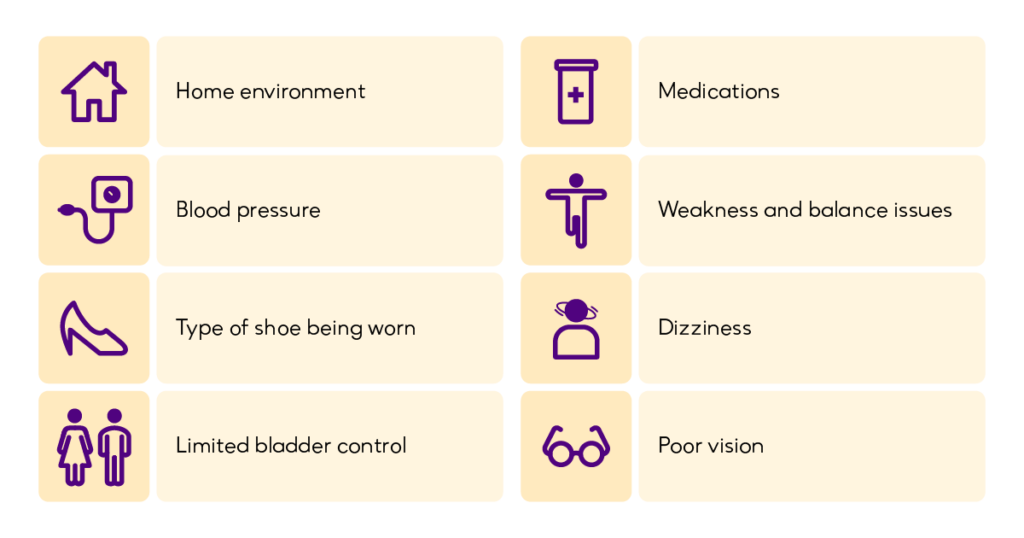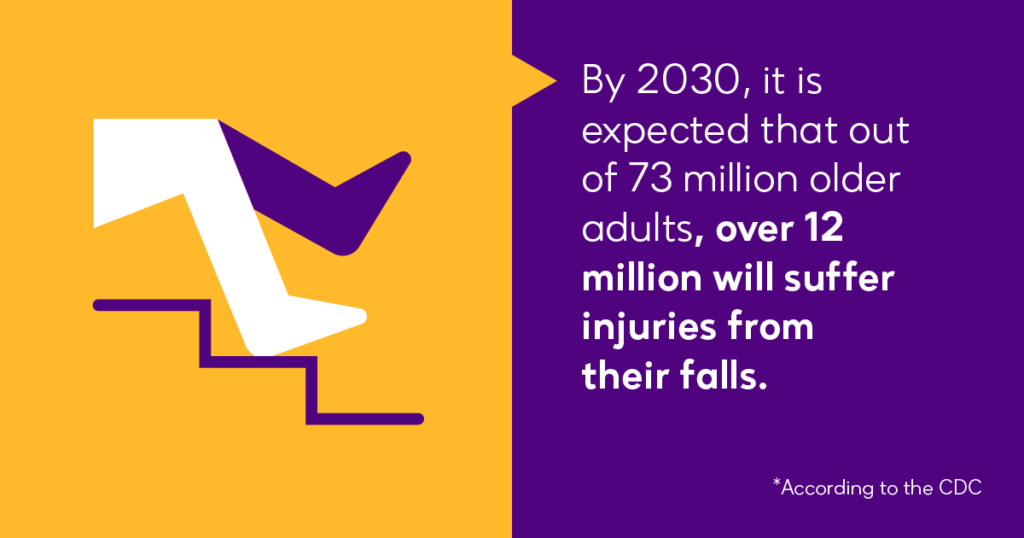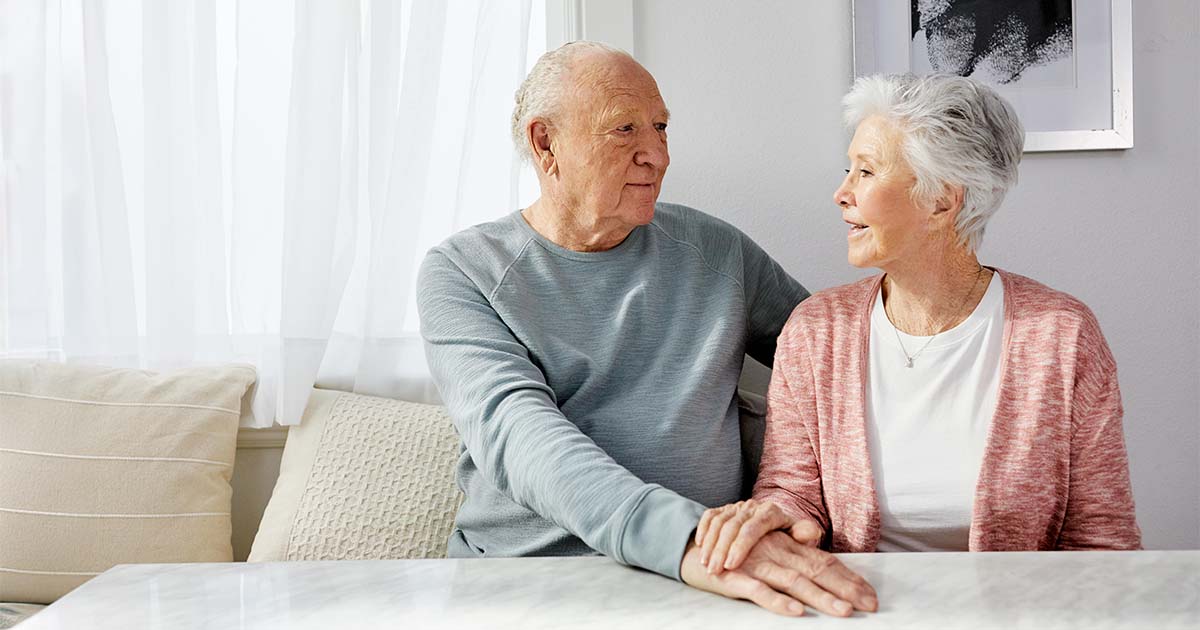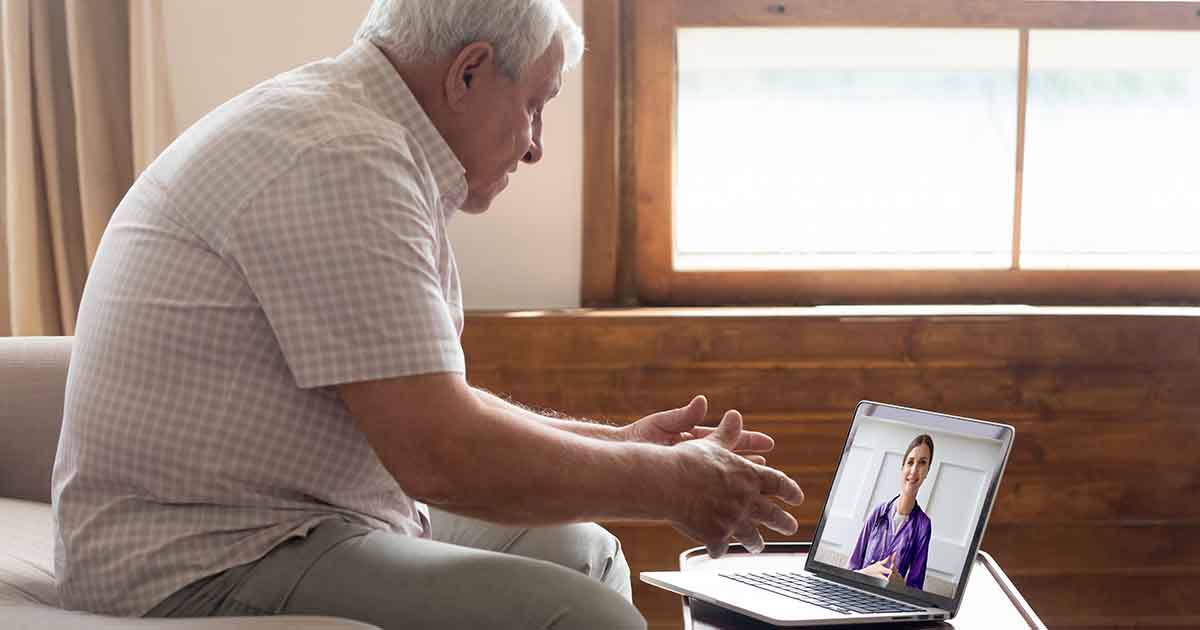Each year, more than 1 in 4 older adults experience a fall – that’s over 36 million falls annually – and the numbers are only increasing, according to the Centers for Disease Control and Prevention (CDC).
As 10,000 adults turn 65 each day, more and more become vulnerable to harmful falls.
Although it may seem common to hear about an older adult falling, falls are not a normal part of aging and they can be prevented. In order to understand how to prevent falls, it is important to know why older adults fall and what causes someone to have a high fall risk.
Why do older adults fall?
According to the World Health Organization (WHO), a fall is an event which results in a person coming to rest inadvertently on the ground floor or other lower level.
Tripping may come to mind as a main reason that falls occur, but there many risk factors for falls. With older adults, fall risk factors aren’t always as obvious as potentially tripping on unsteady ground – risks can include unmanaged medical conditions, unsafe home environments and more.

Although not a comprehensive list of reasons, most falls in older adults occur due to the following factors.
An unsafe home environment
Most falls happen in the home, many of which cause very serious and potentially life-threatening injuries. The good news is that a majority of these falls can be prevented!
Making small changes to your home, like the ones outlined here, can help reduce the risk of falls in older adults.
Unstable blood pressure
There are certain medical conditions that can increase an older adult’s risk of falling. One of these conditions is called orthostatic hypotension, which is when your blood pressure drops anytime you switch from a sitting/laying down position to standing.
This drop in blood pressure can cause unsteady balance, dizziness, blurry vision, muscle weakness or nausea. All these things can affect one’s steadiness and increase fall risks.
Wearing an unsupportive type of shoe
As we age, it is normal for our feet to change as our muscles may thin or weaken. This may cause our nerves to stop sending and receiving electrical messages as efficiently as they once did.
Additionally, arches can get smaller, feet can get flatter and toes can begin to curl.
Using the appropriate shoes or footwear plays a big part in supporting the foot and reducing the risk of a serious fall or injury.
Supportive footwear includes:
- Shoes with bottoms that do not slip or slide easily.
- Shoes that can hold the foot in place via shoelaces or Velcro straps.
- Slip-on shoes are not recommended.
Limited bladder control
Urinary urgency and urinary tract infections (UTIs) are common bladder problems experienced by older adults. Considering many falls happen in or on the way to the bathroom, bladder problems can increase an older adult’s risk of falling.
Additionally, UTIs can cause other physical and cognitive symptoms, making it hard to think clearly and be careful while walking.
Medication-related effects
Taking multiple medications may be required for you to treat multiple medical conditions. However, the combined side effects and interactions might increase your risk of falling.
Certain medications can slow down your nervous system. This might make you react slower or have reduced proprioception, which is your ability to sense movement, action and location.
Poor vision
Poor or low vision can more than double one’s risk of falling. When you can’t see well, you are more likely to trip over everyday obstacles.
Getting annual eye exams reduces an older adult’s risk of vision loss. It can also be a great time to update glasses prescriptions.
Hearing loss
For older adults, it is recommended to get annual hearing tests as well.
A loss of hearing may result in a reduced awareness of the space around you or an increase in feelings of unsteadiness and reduced balance.
The importance of preventing older adults from falling
No matter how a fall happens, the end result can be damaging. In fact, falls are the leading cause of all injuries among older adults.
According to the CDC, 20-30% of older adults who fall suffer serious injuries. These injuries make it hard to get around and live freely. And if an older adult has fallen once before, it increases the chance they will fall again.

Many people who experience a fall develop a fear of falling, even if they do not get hurt. This fear may cause them to limit their everyday activities. This can lead to reduced flexibility and fitness, ultimately increasing their risk of falling again.
Whether you are learning about fall prevention for yourself or a loved one, it is important to know why older adults fall. If we pay more attention to our health and environments, falls are less likely to happen or cause serious or life-threatening injuries.
Home health and fall prevention
Home health care is a clinically proven and cost-effective way to address fall risks and prevent hospitalization. At Enhabit Home Health & Hospice, our goal is to improve patient’s general health and mobility. We identify fall risks and then put a plan into place to fix or avoid them via our evidence-based Fall Prevention Program.
Clinicians can help suggest modifications to your home environment, evaluate your symptoms for conditions that increase fall risks and coordinate with your physician regarding medication simplification or adherence.
If your physician has certified you as homebound and recently diagnosed you with a new, chronic condition that could impact your fall risk, you may be eligible for home health services.
Please note, to qualify for home health services through Medicare, you must meet all Medicare requirements.
Social Share
At Enhabit our patients are our number one priority. From providing the latest medical practices to building deep personal connections, we’re focused on upholding every patient’s dignity, humanity and sense of control on their health care journey.
Home health
Our home health services give patients access to the care they deserve in the comfort of their own homes. From disease and injury management to recovery from surgery, our clinicians help patients confidently achieve their healthcare goals.
Hospice care
Our hospice care services place importance on the comfort of every patient living with a terminal illness. Our caring professionals are dedicated to providing not just physical care, but spiritual and emotional support to every patient and their loved ones.






